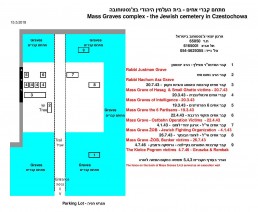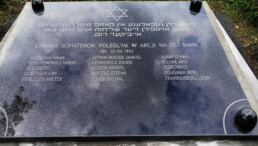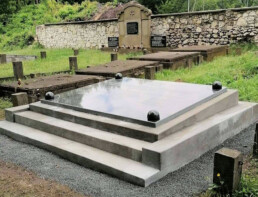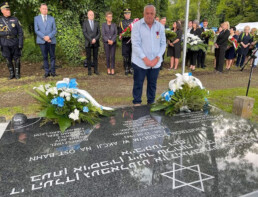"Operation Ostbahn" Victims' Grave
by WIESŁAW PASZKOWSKI, Częstochowa Municipal Museum, History Documentation Centre
Edited: ALON GOLDMAN, Chairman of the Association of Częstochowa Jews in Israel English translation: ANDREW RAJCHER
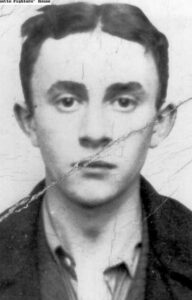 In the spring of 1943, the Jewish Fighting Organisation (ŻOB) looked for a way to fight the Germans. As a station along the transport route towards the Eastern Front, Częstochowa seemed like a good location for sabotage operating on the railway. Jewish prisoners, employed in HASAG-Pelcery, prepared keys with which to unscrew the railway track. Armed and equipped with these tools, five fighters from the “66” youth group left the “Small Ghetto” on 22nd April 1943, together with a group of Jewish workers employed on the German Ostbahn railways. They were Awiw Rozyner, Cwi Lustiger, Lolek Frankenberg (pic left), Harry Potaszewicz and Dawid Altman. They were meant to separate from the workers group and, later, rejoin them at a pre-agreed place in Błeszno.
In the spring of 1943, the Jewish Fighting Organisation (ŻOB) looked for a way to fight the Germans. As a station along the transport route towards the Eastern Front, Częstochowa seemed like a good location for sabotage operating on the railway. Jewish prisoners, employed in HASAG-Pelcery, prepared keys with which to unscrew the railway track. Armed and equipped with these tools, five fighters from the “66” youth group left the “Small Ghetto” on 22nd April 1943, together with a group of Jewish workers employed on the German Ostbahn railways. They were Awiw Rozyner, Cwi Lustiger, Lolek Frankenberg (pic left), Harry Potaszewicz and Dawid Altman. They were meant to separate from the workers group and, later, rejoin them at a pre-agreed place in Błeszno.
The first to “break off” was supposed to be Lolek. He succeeded. Dawid Altman was to be the second, but he was stopped by Bahnschutz Karna (a Volksdeutsche from Wyczerp past Częstochową). Initially, they tried to bribe Karna, but soon another German from the Bahnschutz became involved. Karna backed out of taking the bribe and both of them led Dawid to the guardhouse.
In an attempt to free him, Harry shot at the two Bahnschutz officers. One of them fell, seriously wounded and Dawid fled. Harry, Awiw and Cwi could not escape as they became surrounded by a large number of Germans who shot at them from all sides. Harry and Awiw died on the spot. Cwi barricaded himself inside a barn. He defended himself until he was seriously wounded by a grenade thrown into the barn. Alive and seriously wounded, he was captured by the Gestapo, imprisoned in their basement and tortured in order to give up the names of his companions. Cwi did not break and was shot at the Jewish Cemetery.
The Gestapo and Schutzpolizei took out their vengeance against the Jewish workers. From that group, every second worker was shot – in total, twenty five men. Amongst those shot were Jakub Mosze Gelber Litwin, Nachman Enzel, Berl Zeligman, Stefan Montag, Goldberg (from Warsaw), Rusin (a former pupil at the I.L. Perec School in Częstochowa) and Dudek Lewkowicz. This is according to Liber Brener.
After the War, a cement gravestone was made with the following inscription in Polish:
Of the twenty eight who fell, fifteen are named. In addition, we know that, in December 1942, Mietek Ferleger fell into the hands of the Gestapo. He was tortured and later shot. He is probably resting in an unmarked grave in this cemetery. He is named here so as to memorialise his name somewhere as a companion in the battle.
At the initiative of The Association of Częstochowa Jews in Israel and its Chairman, Alon Goldman, the tombstone of the mass grave was restored.
On 9th June 2022, the restored tombstone was unveiled,
in the presence of the Israeli Ambassador to Poland, the Deputy Mayor of Częstochowa and a large crowd.
